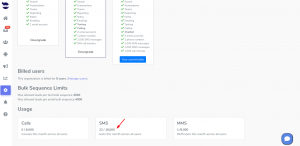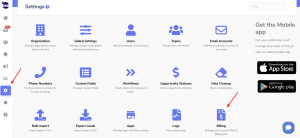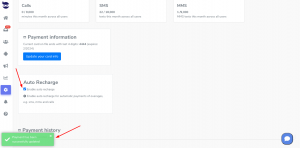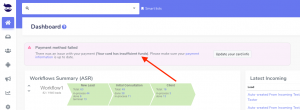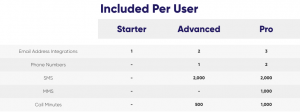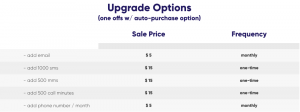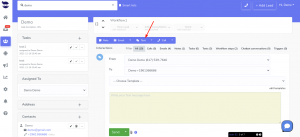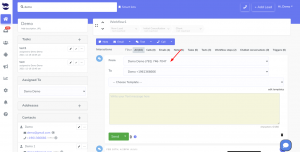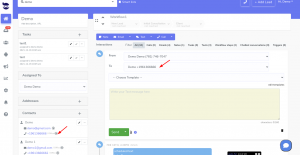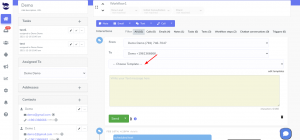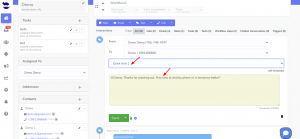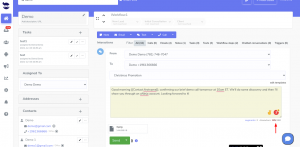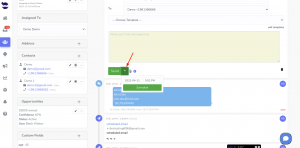Text messages (SMS) are composed of segments. And each segment is 160 characters of text.
Overview
When you send a text that contains more than 160 characters, it is actually billed as multiple texts that are technically called SMS text segments. And you are billed according to the number of segments and not texts.
When you prepare a text template, or you’re about to send a text to a lead from the lead view, you might like to include emojis and special characters to give it a nice design. But they may count more than one character.
To help you monitor the size of your text template, we’ve included a character counter in text templates. It’s also important to understand how many texts you are billed for.
There is a fixed character limit for one text (160 alphanumeric characters per SMS text segment). Emojis and special characters might be counted differently. You also might want to watch out for invisible characters.
When you launch the text, it is encoded by the telephony carrier in different formats to represent the characters and special characters used in the message. (check the encoding section below).
To avoid your phone number being suspended by the Carrier, you want to refrain from using forbidden message content.
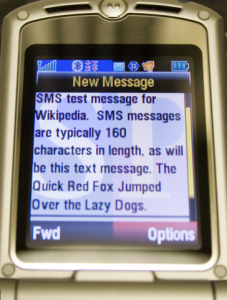 What’s an SMS text segment or Segmentation
What’s an SMS text segment or Segmentation
SMS industries count messages before sending them through your carrier. They count the number of characters that a text contains. Each segment is of 160 characters. But sometimes the character limit exceeds, and one text is converted into two. You’d end up with two messages on your bill.
We’ve exposed in the text template an alert that pops-up when the size of the text overpasses 3 segments.
Maximum Message Length with aNinja Messaging
The aNinja Programmable Messaging platform has a limit of 160 characters in a single incoming or outgoing message request. And that’s based on the text segmentation standard.
When you go over that, the system is automatically creating additional text segments to send out your longer message.
Additional Considerations for Long SMS Messages
Although aNinja supports large message payloads for all Messaging Channels including SMS; it is important to understand that some wireless carriers and devices may behave differently than others when receiving long SMS messages.
In addition, the size of an SMS, and which characters are present (e.g. emojis, signs, and symbols) affect its price, based on segmentation.
Text messages, or SMS, are encoded by the carriers in different formats to represent the characters and special characters used in the message.
The default encoding used in SMS is GSM-7, which consumes fewer segments, making it more cost-effective.
However, if the text content includes special characters like emojis or backticks, a different encoding called UCS-2 is used; it consumes more segments, approximately double the amount of GSM-7.
When it comes to MMS, the encoding used can vary depending on the content of the text. It can be either GSM-7 or UCS-2, depending on whether special characters are included in the message or not.
We highly recommend you learn about GSM-7 and UCS2 encoding methods before sending out your text in Bulk.
Some things to consider
- Try to keep your texts to a max of 160 characters to have a one-to-one mapping of texts sent to text segments billed.
- Emojis and backticks count as multiple characters.
- Eliminate smart quotes, signs, and symbols before sending messages.
- If you’re using emojis or special characters, try to keep your SMS to 70 characters or below.
- Count up the SMS text segments before you run a campaign instead of after. When preparing your text template, keep an eye on the segments & characters counters exposed at the bottom corner of the text template. Counters are also available in the text feature in the lead view.
- Also, check for invisible characters in your template if you pasted the template content from a word document or similar. The characters counter would then indicate e.g. 4 segments when the total number of characters is 270/160, representing 2 segments.
- Host a media file on your website or a file hosting service. Then add the link to download it in your text. (Instead of sending the media file in MMS).
- Test sending the text to yourself before sending it out in Bulk.
- Lastly, please spare a few minutes to check this article for more recommendations before texting. Learning the best practices for sending SMS messages prevents you from being overcharged for additional unnecessary segments.
